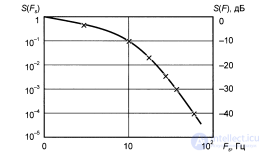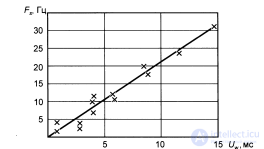Lecture
There are a large number of factors affecting the propagation of radio waves through and above the trees: dependence on crown density (summer-winter), differences in tree height, humidity, leaf size, location of trees, their species, etc .; dependence on the range of radio waves and the associated influence of branches, trunks, leaves on the attenuation and scattering of radio waves.
The possibility of comparative evaluation of experimental data with each other and with theoretical results on the propagation of radio waves of different ranges in forests is extremely difficult due to the fact that many experiments were carried out without proper calibration both in terms of measuring equipment and parameters of forests, and mathematical models of propagation are rather cumbersome .
Consider the influence of forest areas on the propagation conditions of the UHF radio waves used in cellular mobile communication systems.
As is known, the design of a cellular mobile communication system raises the problem of uniform radio coverage of territories, which can include significant areas covered with forest vegetation [3.13]. In this regard, it is necessary to have sufficiently accurate information about the effect of forests on the conditions of propagation of radio signals of the decimeter range between the BTS and MS.
As shown in [3.9, 3.25], the main reasons for the change in the electromagnetic field propagating through the forest at the point of reception are:
- attenuation processes due to energy losses in trunks, branches, leaves, etc .;
- diffraction processes on the elements of the tree structure, which leads to fluctuations of the amplitude and phase of the radio signal, to a change in its spectrum during wind loads on the tree;
- the resulting electromagnetic field at the point of reception is an interference field, the components of which are:
■ field components scattered after diffraction;
■ emerging additional (for example, orthogonal) components of the electromagnetic field, leading to cross-polarization of the received signal;
■ reflection of the field from the underlying forest surface, leading to additional fluctuations of the radio signal;
■ a change in the density of forests with a change in the season, leading to a change in the specific attenuation coefficient;
■ changes in forest moisture with changes in weather conditions;
■ repositioning of tree elements depending on wind load, leading to fluctuations in the field;
■ changing the position of the MS mobile station relative to the BTS and the forest, etc.
Changes in the spectrum of the radio signal during propagation in a forest under wind loads.
Under wind loads on forests, trunks, branches and leaves of trees undergo complex spatial fluctuations under the influence of time-varying air pressure.
The distribution of the air flow along the length of the forest has the following features (Fig. 3.31).

Fig. 3.31. Distribution of air flow along the length of the forest: area / - edge of the forest (front edge of the forest); Region II is the region of the main wind flow and diffusion within the forest; area III - the rear edge of the forest
When the speed of air flow U0 on the forest is, the air flow starts to flow around the forest edge, rising to the canopy of trees, and at a distance of (50 ... 80) m from the edge the wind speed increases, then the airflow above the canopy of trees (with low resistance) as if split, with this part of this stream diffuses into the forest. As experiments have shown, the flow velocity inside the forest is of the order of G // ~ 1 m / s, and above the forest it can reach 10 ... 20 meters or more per second. At the back edge of the forest side, the flow lines of the air flow are broken and a vortex is formed.
The air flow inside the forest, due to significant aerodynamic drag, has a speed Uf ~ (0.02 ... 0.03) ^ already at a distance of 200 ... 250 m from the front edge of the forest, but can, as noted above, reach 1 m /with.
The disruption of the streamlines of the air flow occurs approximately at a distance Lm ~ 15h / (at hf = 20 m, lsh ~ = 300 m).
With the propagation of radio waves through the oscillations, the elements of the forest change the attenuation coefficient a and the phase coefficient (3 using the effective dielectric constant, which means the amplitude and phase of the radio signal to the receiving points.
As a result of the wind effect on the forest, a change occurs in the spectrum of the radio signal propagating in the forest. To the Doppler frequencies arising from the movement of mobile stations relative to the BTS, are added low-frequency components arising from the effect of the wind on the forest elements.
The author has not found works in which experiments on the effect of wind loads on changes in the spectra of radio signals propagating between BTS and MS in cellular mobile communication systems would be described.
In [3.21], changes in the spectra of monochromatic radio signals when reflected from forests, whose elements oscillate under the action of the wind, are studied at small slip angles (0 <5 ... 6 °), and for the averaged dependence of the energy spectrum S (F) frequencies (in the range from 0 to 100 Hz) are characterized by the following areas (Fig. 3.32):
S (Fs <10 Hz) (-10) dB - described by the Gaussian law (that is, the distribution of speeds of movement is close to normal);
S (Fs> 10 Hz) - the form S (Fs) can be described by the power law S (Fs) ~ 1 / FS4, and the power law of change S (Fs) is maintained up to the frequency Fs ^ 200 Hz.

Fig. 3.32. The averaged dependence of the energy spectrum S (F) on frequency
The dependence of the width of the spectra (characterizing the change in Fs with changing wind speed Uw) as a function of Uw is shown in Fig. 3.33 [3.21], from which it follows that the main contribution to the formation of the spectrum of the reflected signal is made by branches and tops of trees, because the graph FS (UW) is plotted as the width of the spectrum for a certain value of dispersion and correlation function for a given wind speed Uw.
As noted in [3.21], when radio signals are reflected from oscillating forest elements, significant depolarization of signals was observed, a weak correlation between the elements of the backscatter matrix, that is, elementary reflectors that form a reflected radio signal, are small or comparable with the wavelength.

Fig. 3.33. The dependence of the Doppler frequency on the speed of the wind load on the forest.
Thus, in cellular mobile communication systems that use a decimeter wave band, it is necessary to take into account that in a forest with wind load, low-frequency components may appear in the spectrum of the received radio signal, which can cause distortions during demodulation.
Thus, the passage of radio waves through forest massifs is accompanied, as follows from the previous consideration, not only by the integral attenuation of wave energy, but also by changing the polarization plane, the resulting amplitude and phase of the wave at the receiving point, changing its spectrum, and all these phenomena also change depending on the season, weather conditions, the location of the BTS and MS, the height of the BTS antenna, etc.
The obtained results prove the strong influence of the forests on the attenuation of radio waves, causing cross-polarization, changes in the spectrum of received signals (the so-called “bandwidth broadening”) under wind loads, etc. These results form the basis for obtaining a fundamental physical understanding of how processes proceed. UHF radio wave absorption in forests, and can be used in the design of cellular mobile communication systems (under the section - radio coverage of the territory).
As for the GSM standard for cellular mobile communication, waves are used at frequencies of 900, 1800 and 1900 MHz, we will try to summarize the experimental data on the influence of forests during the propagation of radio waves of these ranges.
Mac Patry and Ford [3.21] investigated the attenuation coefficient for radio wave propagation through a forest thickness of L ~ 85 m (deciduous forest, summer time, trees completely covered with leaves) at a frequency of / = 1200 MHz for vertical polarization of radio waves and obtained values the linear attenuation coefficient for a vertically polarized wave is of the order of AB ~ 0.35 dB / m, and for a horizontally polarized wave it is a ~ ~ OD dB / m, and the attenuation increases with increasing frequency:
- / = 1200 MHz a ~ (0.25-0.35) dB / m;
- / = 3260 MHz a ~ (0.4-0.5) dB / m.
Experiments conducted by evaluating the cross-polarization factor (equal to the ratio of the amplitude of the electric field strength of a vertically polarized wave to a horizontally polarized XPD = Emv / Emh) showed that at 900, 1000 MHz the value of XPD varies within -10 <XPD <0 dB, with changing tree heights from
3 to 16 m and a change in the length of the radio beam from 150 to 1000 m.
The depolarization of radio waves in forests is manifested depending on the ratio of the height of the receiving antenna of the mobile station to the wavelength, because the Emv is dramatically attenuated (currents are induced in the vertical trunks of trees), and the Emh is less attenuated, therefore, the cross-polarization factor XPD <0 dB.
In the frequency range from 500 MHz to 3000 MHz and for distances greater than more than 5 times the tree height, the experimental results are in fairly good agreement with theoretical calculations for the diffraction model on an ideal sharp wedge assuming that the distance and heights are the same.
Thus, forests on the frequencies used in the GSM standard have the following influence on the propagation condition of radio waves:
- the value of the effective attenuation coefficient is large enough and lies within a (800 ... 2000 MHz) "(from 0.2 to 0.4) dB / m;
- the propagation of radio waves is always accompanied by cross-polarization with the cross-polarization factor lying within the limits: XPD «from 0 to (-10) dB;
- there is a dramatic change in the effective working attenuation depending on the height of the location of the receiving antenna and its orientation in space, etc.
Comments
To leave a comment
GSM Basics
Terms: GSM Basics